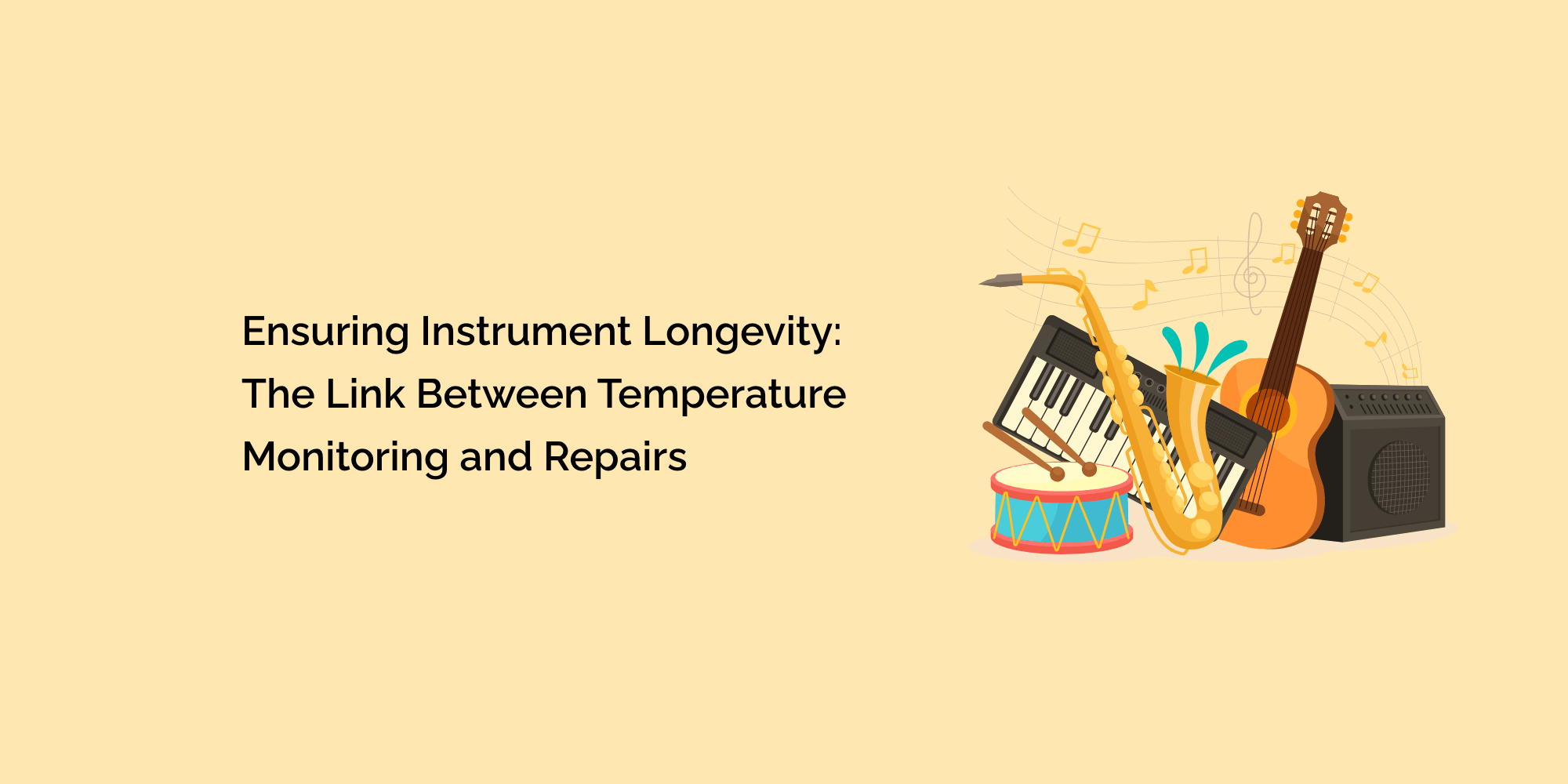Proper instrument care and maintenance are vital for ensuring the longevity and performance of musical instruments. While factors such as regular cleaning and good handling are well-known, the role of temperature monitoring in instrument longevity should be considered. Temperature fluctuations can significantly impact instruments, leading to structural damage, tonal changes, and the need for costly repairs. This detailed blog will explore the link between temperature monitoring and tool repairs, highlighting the importance of maintaining stable temperature conditions to prevent damage and prolong instrument lifespan.
The Impact of Temperature on Musical Instruments
Temperature fluctuations can have adverse effects on musical instruments. Temperature changes cause materials to expand or contract, potentially leading to structural damage, cracks, and joint failures. Temperature also influences the sound quality and overall performance of instruments.
Understanding the Repair Needs Caused by Temperature Damage
Temperature damage can result in various repair needs. Structural issues like wood cracks or warping may require repairs to restore the instrument's stability. Joint failures and loose parts may necessitate regluing or reassembly. Temperature-related tonal changes can affect the instrument's overall performance and may require adjustments or repairs.
The Role of Temperature Monitoring in Preventing Instrument Damage
Maintaining stable temperature conditions is crucial for preventing instrument damage. Temperature monitoring helps raise awareness of the impact of temperature fluctuations on instruments and enables proactive measures to mitigate risks and vulnerabilities.
Introduction to Temperature Monitoring Solutions
Temperature monitoring solutions include traditional thermometers, hygrometers, digital temperature sensors, data loggers, and wireless monitoring systems. These devices provide accurate temperature readings, data logging capabilities, and real-time monitoring to ensure optimal temperature control.
Real-Time Monitoring and Alerts for Temperature Deviations
Real-time monitoring and alerts allow for continuous temperature tracking and instant notifications when temperature deviations occur. These features enable prompt action to address temperature fluctuations and prevent potential instrument damage.
Benefits of Temperature Monitoring in Instrument Repairs
Temperature monitoring offers several benefits in instrument repairs. Early detection of temperature-related issues allows for timely intervention, reducing the extent of damage and minimizing the need for costly repairs. By preserving instrument value and performance, temperature monitoring contributes to instrument longevity.
Best Practices for Temperature Monitoring in Instrument Care
Strategic placement of temperature sensors ensures accurate readings and effective monitoring. Regular calibration and maintenance of monitoring devices guarantee their reliability and precision in capturing temperature fluctuations.
Integrating Temperature Monitoring with Instrument Maintenance
Temperature monitoring should be integrated into regular instrument maintenance routines. Incorporating temperature checks as part of maintenance procedures helps promptly identify and address temperature-related issues. Adjusting climate control systems based on temperature data ensures optimal instrument storage and usage temperature conditions.
Educating Musicians on Temperature Monitoring and Instrument Care
It is crucial to educate musicians on the importance of temperature monitoring and its impact on instrument longevity. Musicians should know proper instrument storage and usage techniques to minimize temperature risks. Providing guidelines and resources on temperature monitoring enhances instrument care practices.
Collaboration Between Musicians, Repair Technicians, and Temperature Experts
Collaboration among musicians, repair technicians, and temperature experts is essential in instrument preservation. Sharing temperature data and observations fosters a collective effort in understanding and addressing temperature-related challenges, contributing to improved instrument longevity.
Certainly! Here are some frequently asked questions (FAQs) regarding the link between temperature monitoring and instrument repairs:
How do real-time monitoring and alerts help prevent instrument damage?
Real-time monitoring and alerts provide continuous temperature tracking and instant notifications when temperature deviations occur. This enables timely intervention to address temperature fluctuations promptly, preventing potential damage to instruments.
What are the benefits of temperature monitoring in instrument repairs?
Temperature monitoring offers several benefits in instrument repairs. It helps detect temperature-related issues early, minimizing the extent of damage and reducing the need for costly repairs. By preserving instrument value and performance, temperature monitoring contributes to the longevity of instruments.
How should temperature sensors be placed for accurate readings?
Temperature sensors should be strategically placed in critical areas, such as instrument storage rooms or cases, to capture temperature near the instruments. They should be positioned away from direct sunlight, heat sources, and drafts that could affect the accuracy of the readings.
Conclusion
Temperature monitoring plays a vital role in preventing instrument damage and ensuring longevity. By recognizing the impact of temperature fluctuations on instruments, musicians can take proactive measures to monitor and control temperature conditions. Early detection of temperature-related issues minimizes the need for costly repairs and preserves the value and performance of instruments. Temperature monitoring becomes an integral part of instrument care through strategic placement of sensors, regular calibration, and integration with instrument maintenance. Educating musicians on temperature monitoring and promoting collaboration between musicians, repair technicians, and temperature experts enhances instrument preservation efforts. By embracing temperature monitoring as a fundamental aspect of instrument maintenance, musicians can safeguard their instruments, prolong their lifespan, and continue creating beautiful music for years.








